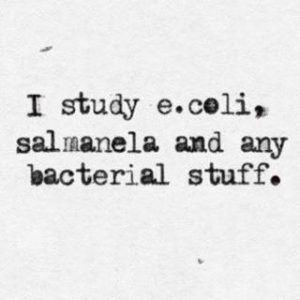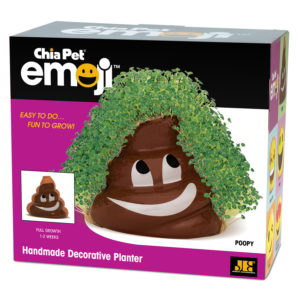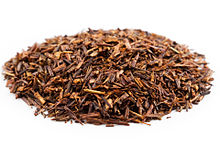Friend of the barfblog.com shares his thoughts about the five-second rule, peer-reviewed research, and media attention. Thanks for doing this, Don.
dp
In March 2014 I got angry. I saw an article in the popular press indicating that researchers from Aston University in the United Kingdom had “proved the five second rule was real” It was not the finding that made me angry as much as the science behind it. Or more properly the lack of science behind it.
 We’ve been studying microbial cross-contamination in my lab for more than 15 years, and I have considered myself a quantitative food microbiologist for my entire career. Given those two observations, it’s only natural that I be interested in an article like this. But when I reached out to the University for more information I learned the research had not been peer-reviewed, and the best that they could offer was a PowerPoint presentation. A PowerPoint presentation is not science. Science proceeds through peer review. Like democracy it’s a terrible system, just the best one we have found so far.
We’ve been studying microbial cross-contamination in my lab for more than 15 years, and I have considered myself a quantitative food microbiologist for my entire career. Given those two observations, it’s only natural that I be interested in an article like this. But when I reached out to the University for more information I learned the research had not been peer-reviewed, and the best that they could offer was a PowerPoint presentation. A PowerPoint presentation is not science. Science proceeds through peer review. Like democracy it’s a terrible system, just the best one we have found so far.
After I got angry, I got busy. And like any good professor by “got busy”, I mean that a graduate student got busy doing the actual work of science. I had a brand-new MS student starting in my lab, and she had funding from another source, but needed a research project. We worked together to design an appropriate series of studies that would advance our understanding of microbial cross-contamination while at the same time could generate a press release that might get a little bit of attention. Like any good scientists we built on the work of others. We acknowledged non-peer-reviewed work from other institutions that paved the way like high school student Jillian Clarke in Hans Blaschek’s lab at the University of Illinois. We also acknowledged the first peer-reviewed research from Paul Dawson’s lab at Clemson University.
Flash forward a couple of years, we submitted our article to one of the best journals out there that publishes food microbiology research, Applied and Environmental Microbiology and after peer review and appropriate revisions our article was accepted for publication. I reached out to a colleague in the media relations department at Rutgers University, and we worked together to write a press release.
As you may have noticed, we have garnered extensive media attention with thousands of articles published around the world. The New York Times did a particularly nice piece interviewing me as well as my colleague Bill Hallman, and barfblog’s Doug Powell. It has been a fun ride, but I’m looking forward to getting back to other things. Just keeping up with the requests for interviews has been almost a full-time job, I have generally resisted the temptation to respond to commenters on the Internet, who complain about everything from the waste of grant funds (not the case, we used discretionary funds I raised myself), to suggestions that I studied the wrong thing.
But before we close the books on this one, I do want to respond to Aaron Carroll, a medical doctor who became interested in the topic when he co-authored a book on medical myths. Carroll insists that it’s not any of the factors we studied that are important, but rather how dirty the surface might be. He is certainly correct in that the level of contamination, as well as the type of contamination are important (pro tip: coliforms don’t make us sick), but the degree to which those microbes transfer is also essential in determining risk. As I’ve said in many interviews, if there are no pathogens present on the surface, the risk is zero. The immune state of the person doing the eating also makes a difference. The risk for someone who is immunocompromised is higher than the risk someone who has a healthy immune system.
 So as any listener to our food safety podcast will know, it turns out “it depends” and “it’s complicated.” The level of contamination, the type of contamination, the nature of the surface, the nature of the food, as well as the immune state of the person all matter in determining risk of eating food off the floor.
So as any listener to our food safety podcast will know, it turns out “it depends” and “it’s complicated.” The level of contamination, the type of contamination, the nature of the surface, the nature of the food, as well as the immune state of the person all matter in determining risk of eating food off the floor.
Longer contact times increase cross-contamination of Enterobacter aerogenes from surfaces to food
Applied and Environmental Microbiology; Appl. Environ. Microbiol. November 2016 vol. 82 no. 21 6490-6496
Robyn C. Miranda and Donald W. Schaffner
http://aem.asm.org/content/82/21/6490.abstract?etoc
Abstract
Bacterial cross-contamination from surfaces to food can contribute to foodborne disease. The cross-contamination rate of Enterobacter aerogenes on household surfaces was evaluated by using scenarios that differed by surface type, food type, contact time (<1, 5, 30, and 300 s), and inoculum matrix (tryptic soy broth or peptone buffer). The surfaces used were stainless steel, tile, wood, and carpet. The food types were watermelon, bread, bread with butter, and gummy candy. Surfaces (25 cm2) were spot inoculated with 1 ml of inoculum and allowed to dry for 5 h, yielding an approximate concentration of 107 CFU/surface. Foods (with a 16-cm2contact area) were dropped onto the surfaces from a height of 12.5 cm and left to rest as appropriate. Posttransfer, surfaces and foods were placed in sterile filter bags and homogenized or massaged, diluted, and plated on tryptic soy agar. The transfer rate was quantified as the log percent transfer from the surface to the food. Contact time, food, and surface type all had highly significant effects (P < 0.000001) on the log percent transfer of bacteria. The inoculum matrix (tryptic soy broth or peptone buffer) also had a significant effect on transfer (P = 0.013), and most interaction terms were significant. More bacteria transferred to watermelon (∼0.2 to 97%) than to any other food, while the least bacteria transferred to gummy candy (∼0.1 to 62%). Transfer of bacteria to bread (∼0.02 to 94%) was similar to transfer of bacteria to bread with butter (∼0.02 to 82%), and these transfer rates under a given set of conditions were more variable than with watermelon and gummy candy.
IMPORTANCE The popular notion of the “five-second rule” is that food dropped on the floor and left there for <5 s is “safe” because bacteria need time to transfer. The rule has been explored by a single study in the published literature and on at least two television shows. Results from two academic laboratories have been shared through press releases but remain unpublished. We explored this topic by using four different surfaces (stainless steel, ceramic tile, wood, and carpet), four different foods (watermelon, bread, bread with butter, and gummy candy), four different contact times (<1, 5, 30, and 300 s), and two bacterial preparation methods. Although we found that longer contact times result in more transfer, we also found that other factors, including the nature of the food and the surface, are of equal or greater importance. Some transfer takes place “instantaneously,” at times of <1 s, disproving the five-second rule.
 The conversation goes to pizza and COVID-19 (Australian and Jersey), Thanksgiving plans (or lack thereof) and eating just black licorice as nutrient source. The episode ends with a discussion about number and size of COVID-19 clusters of in various food settings.
The conversation goes to pizza and COVID-19 (Australian and Jersey), Thanksgiving plans (or lack thereof) and eating just black licorice as nutrient source. The episode ends with a discussion about number and size of COVID-19 clusters of in various food settings.








